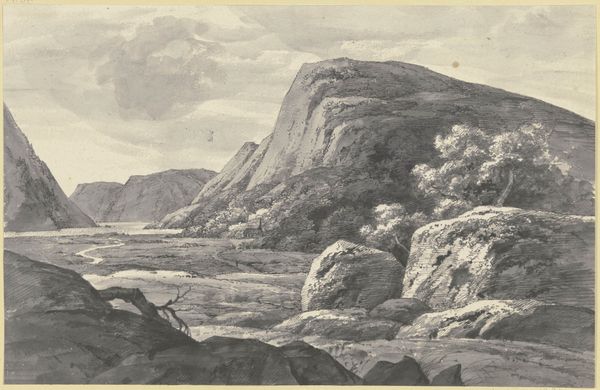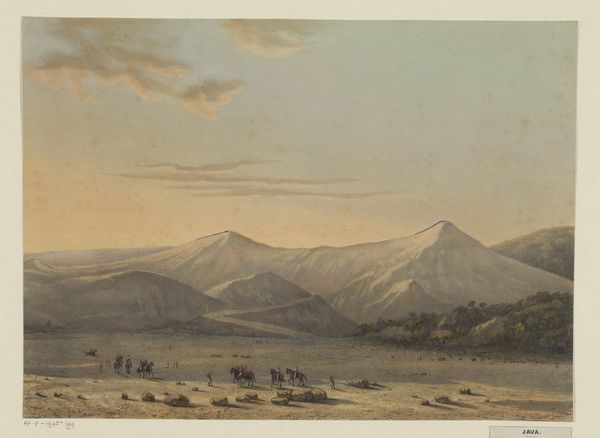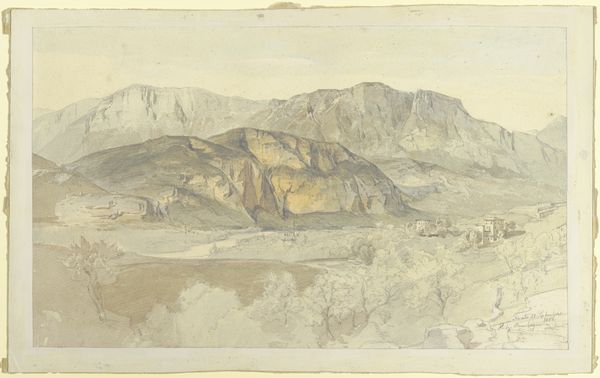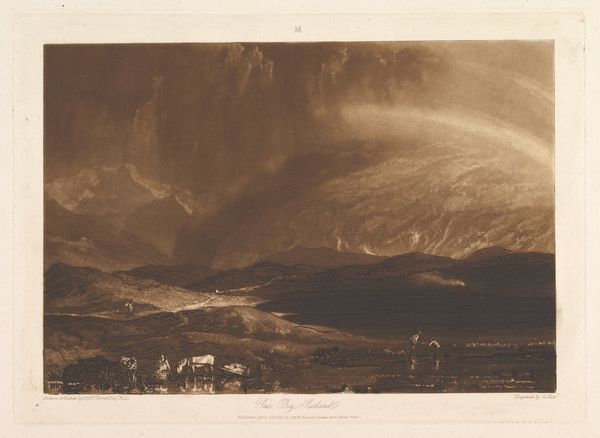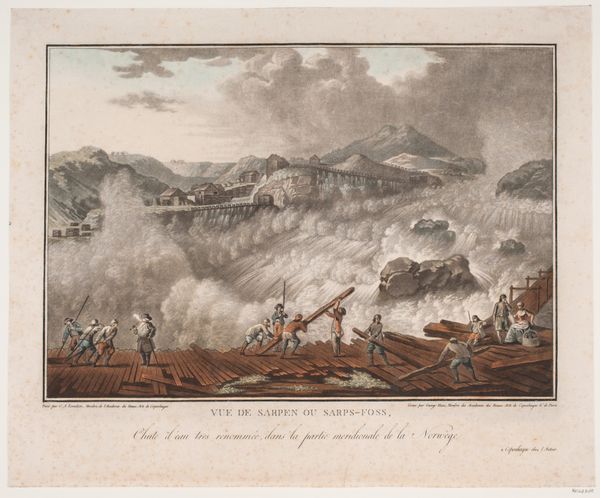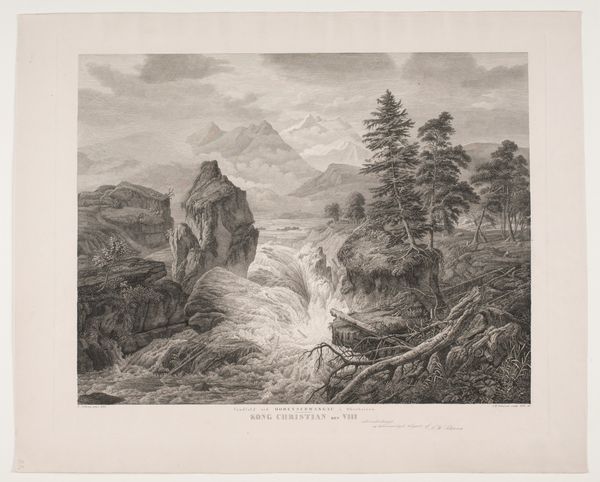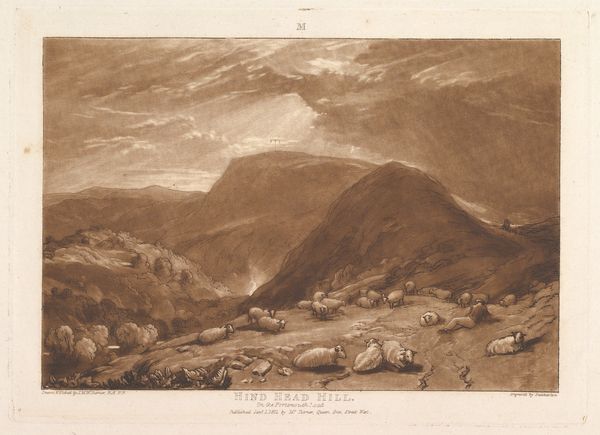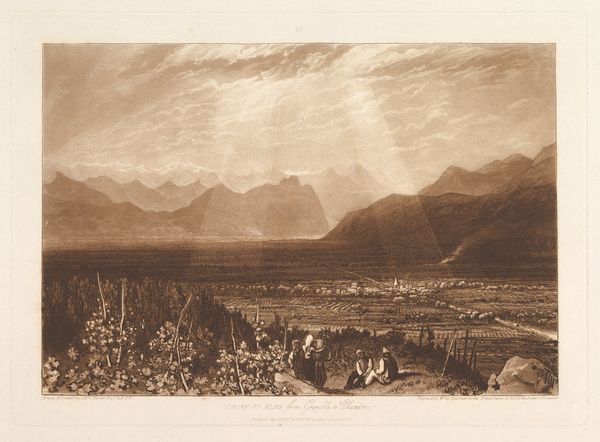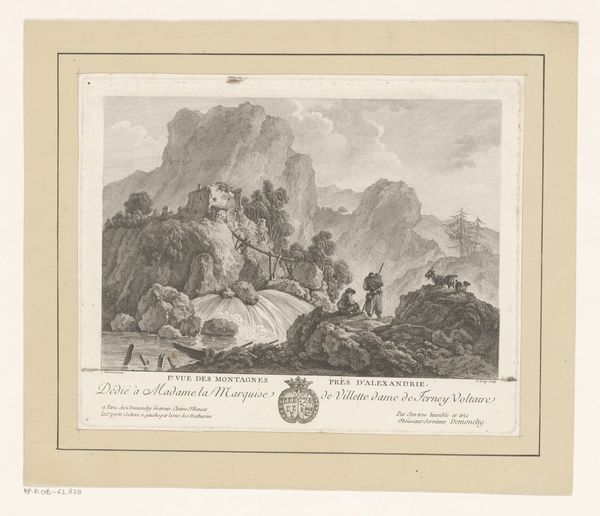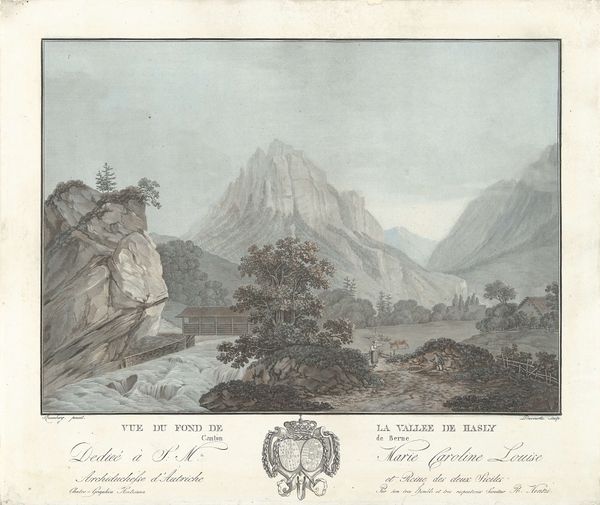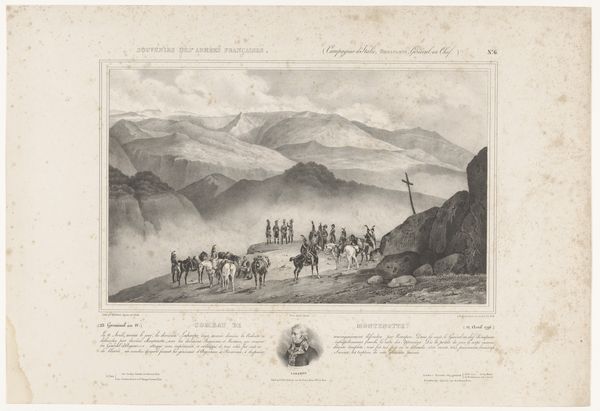
The "Kingitorssuak" seen from a valley near Kangerdluarssunguak, Greenland 1863
0:00
0:00
drawing, print, watercolor
#
drawing
# print
#
landscape
#
watercolor
Dimensions: Image: 10 1/4 × 14 11/16 in. (26 × 37.3 cm) Sheet: 12 15/16 × 16 7/8 in. (32.8 × 42.8 cm)
Copyright: Public Domain
Curator: Here we have "The 'Kingitorssuak' seen from a valley near Kangerdluarssunguak, Greenland," created in 1863 by Lars Møller. It’s a drawing with watercolor and printmaking techniques. What strikes you initially? Editor: A sense of overwhelming quietude, a stark beauty that seems to dwarf the tiny figures huddled in the foreground. The scale is quite something. Curator: Indeed. Møller was part of a broader 19th-century trend where landscape art, often subsidized by colonial powers, served both scientific and ideological functions. Greenland, for Europeans, represented the sublime frontier—a space for projection of both scientific curiosity and territorial ambition. Editor: It makes me think about whose gaze is centered here. Are we invited to admire untouched wilderness, or subtly reminded of dominion? The almost fragile watercolor feels intentionally chosen, highlighting perhaps the vulnerability of this place in the face of encroaching "civilization." Curator: That’s an interesting angle. Møller worked for the Royal Greenland Trading Department, documenting landscapes for primarily a Danish audience. His work exists within the power dynamics of colonial representation. The seemingly objective eye carries a burden. The figures almost feel tokenistic, placed there as symbols of native life dwarfed by imperialist ideas about landscape. Editor: Absolutely. It also brings up discussions about climate and environmental justice today. When viewing this vista now, knowing what we do, a layer of historical accountability is unavoidable. I find it compelling how art created during times of blatant exploitation forces that introspection on modern audiences. Curator: A crucial point. This artwork provides insight into the narratives, the aesthetics, and political framework that shaped a nation's understanding of its relationship to the world, particularly regarding colonized spaces. It offers, though sometimes problematically, insight into social dynamics. Editor: It serves as a document, revealing not just landscape, but modes of seeing. It’s a reminder to interrogate the contexts that birthed it, so that these visions no longer promote exploitation and cultural destruction, but provoke awareness and inspire necessary transformations.
Comments
No comments
Be the first to comment and join the conversation on the ultimate creative platform.
